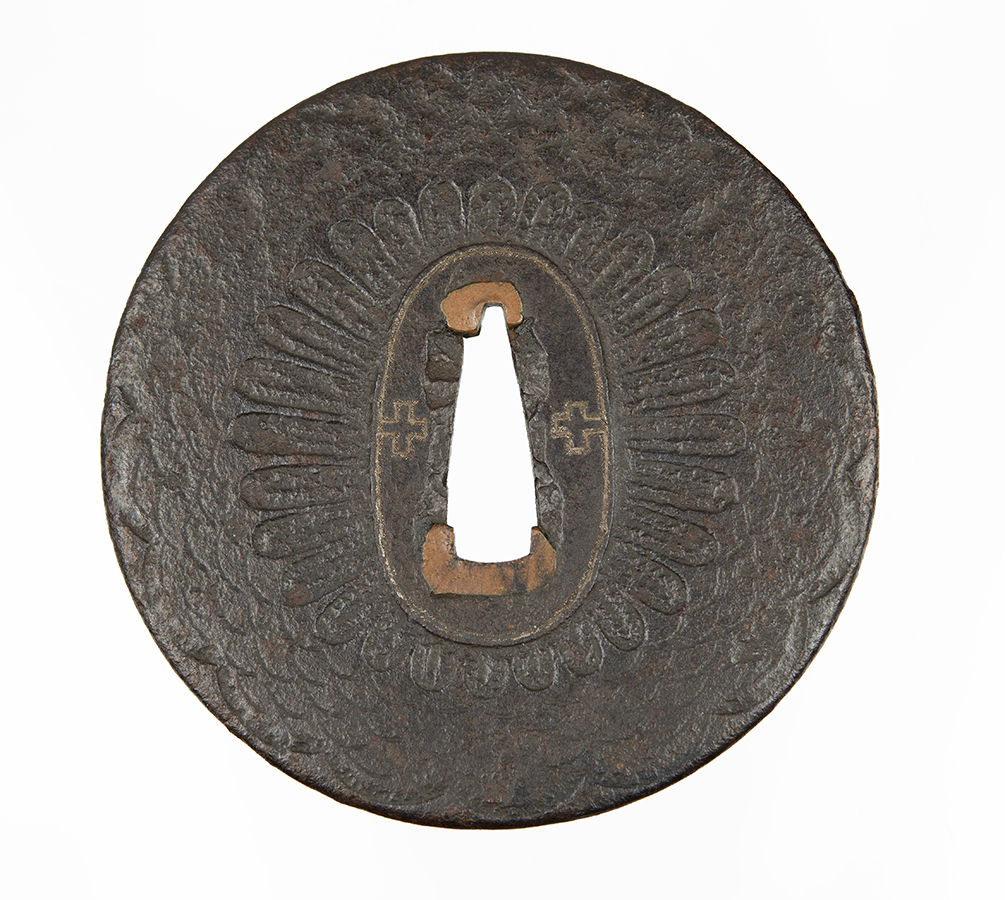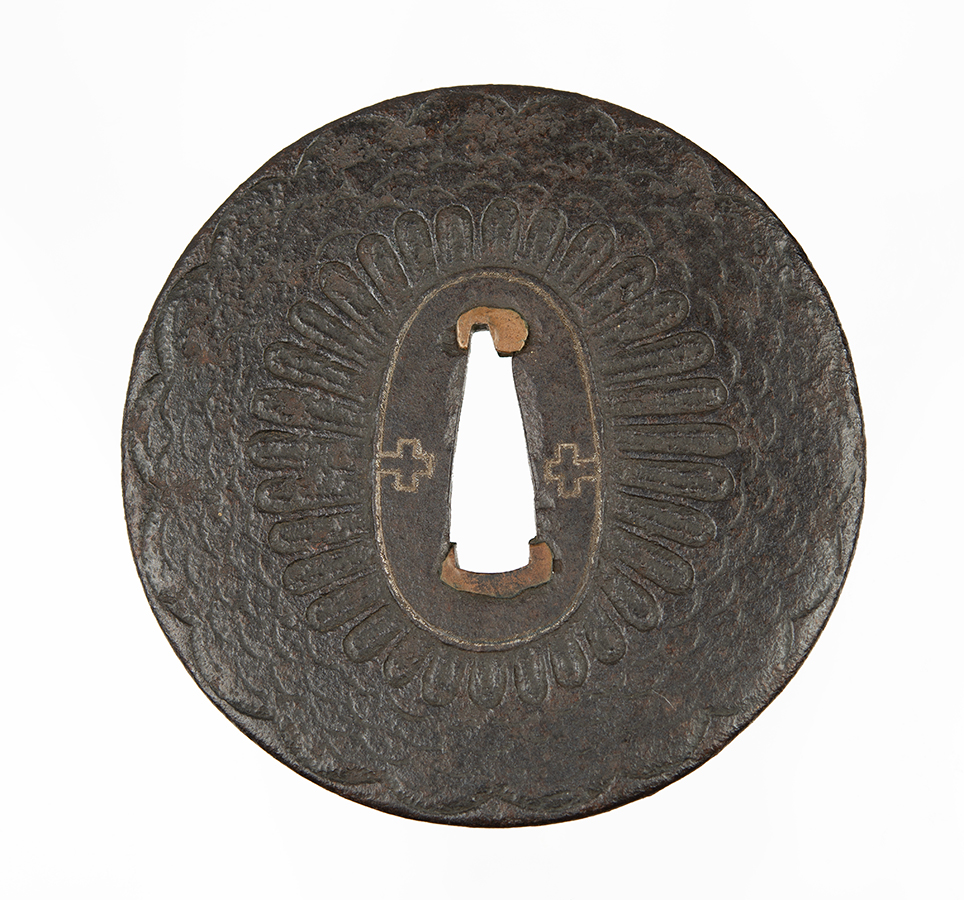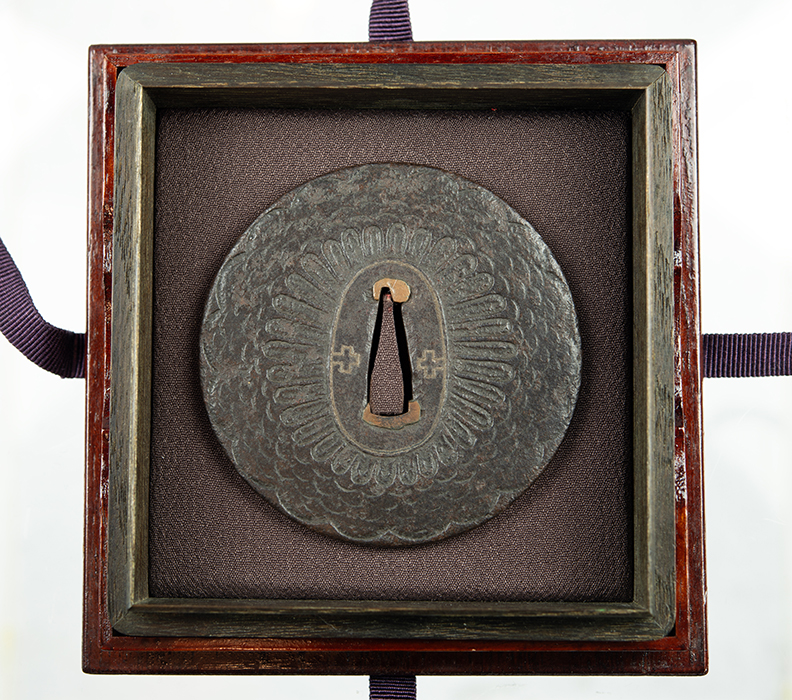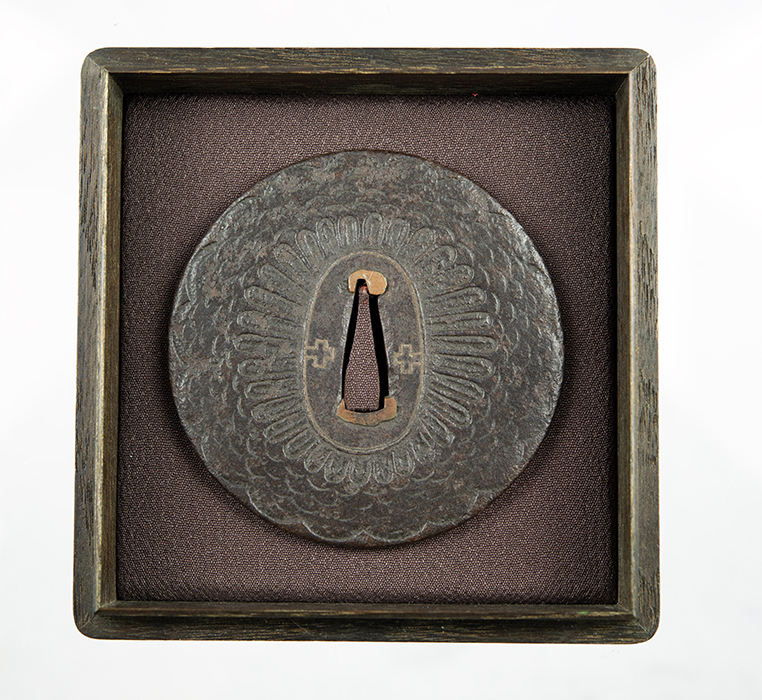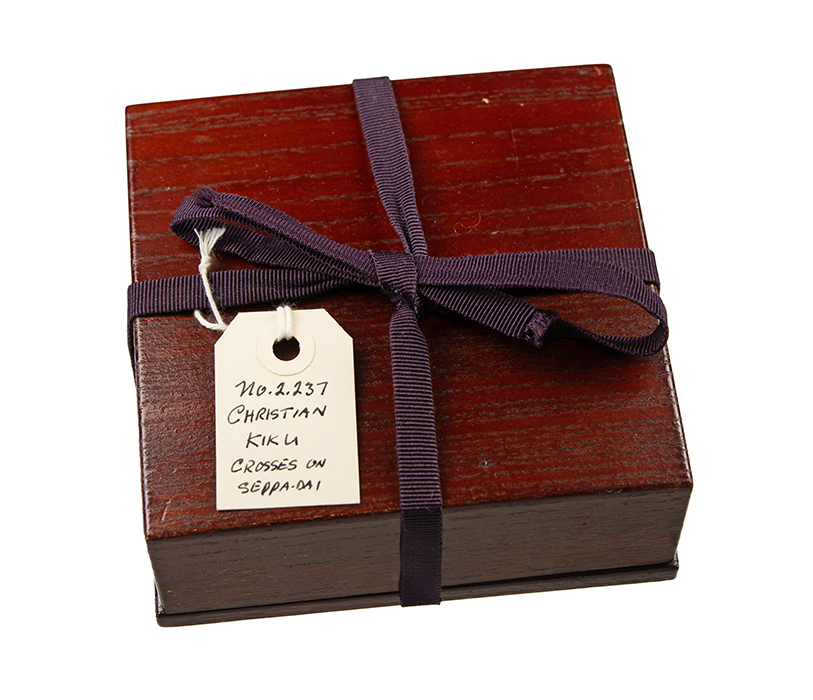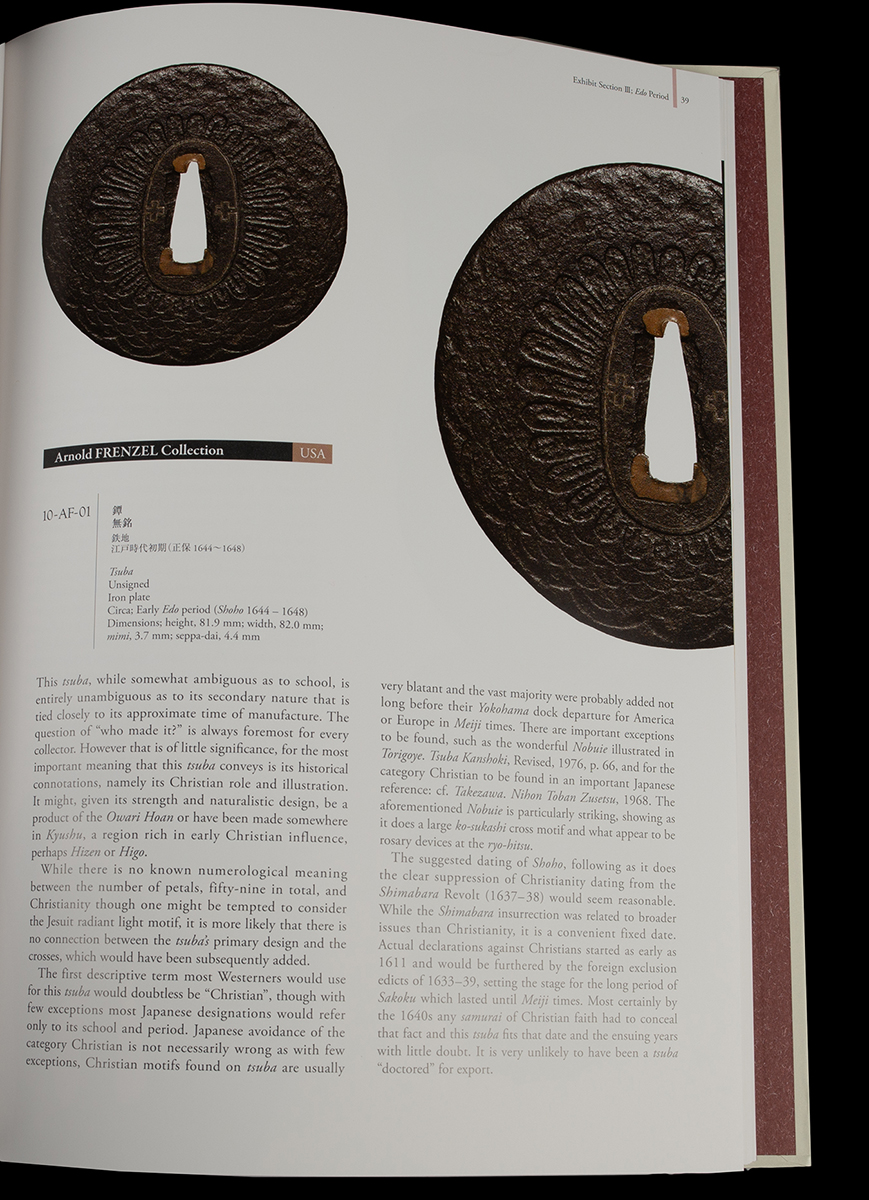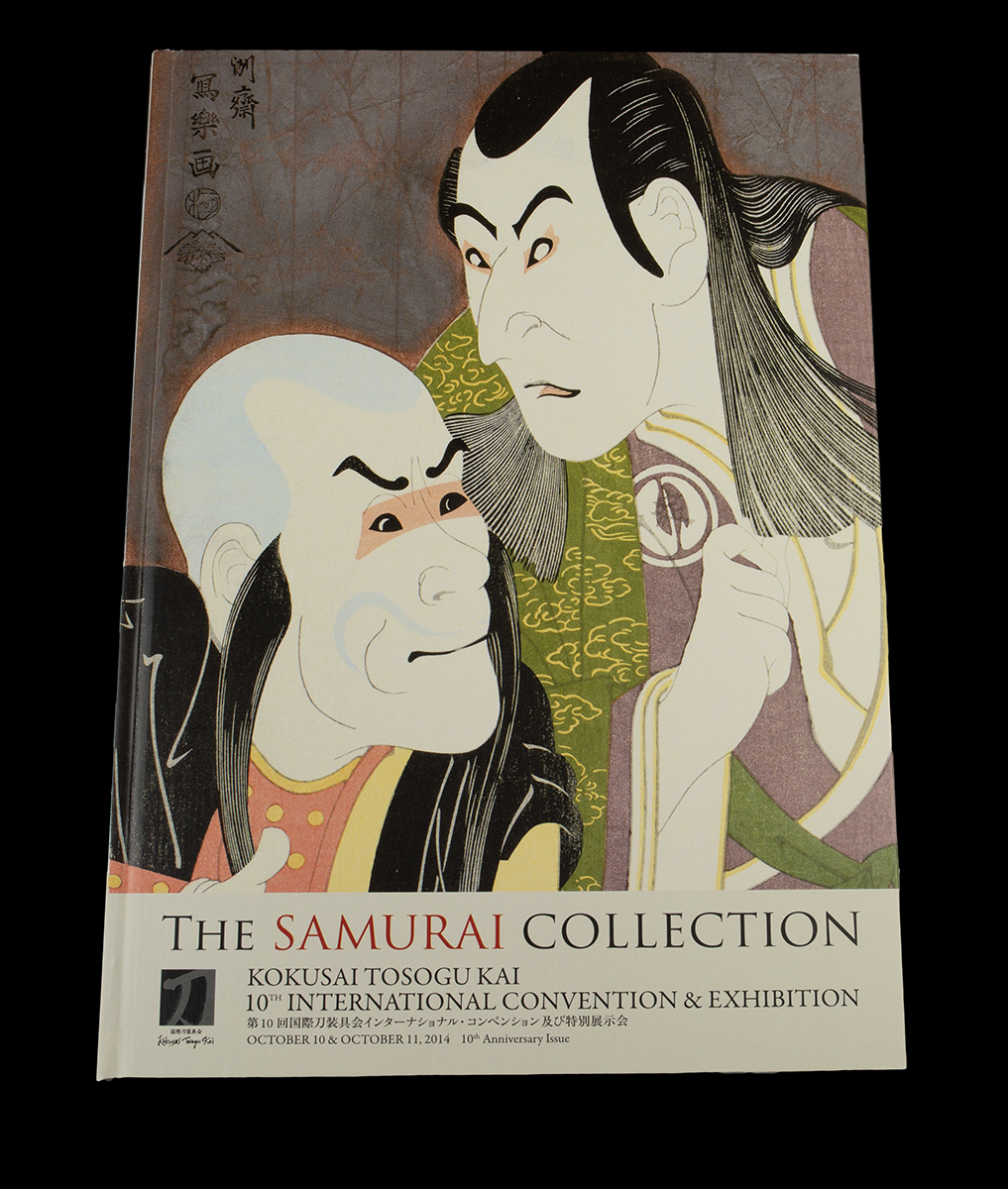Christian Tsuba
Published: Prof. Arnold Frenzel Kokusai Tosogu Kai 2014
鐔 無銘 鉄地 江戶時代初期(正保1644~1648)Dimensions: 81.9 mmm x 82 mm, 3.7 mm mimi 4.4 mm seppa dai
An important example of a Christian tsuba. This was once in the collection of Professor Arnold Frenzel and published in the 10th Kokusai Tosogu Kai catalog. Below is the fulsome description written by Prof. Frenzel for that occasion:
Tsuba
Unsigned
Iron plate
Circa; Early Edo period (Shoho 1644 - 1648)
Dimensions; height, 81.9 mm; width, 82.0 mm; mimi, 3.7 mm; seppa-dai, 4.4 mm
This tsuba, while somewhat ambiguous as to school, is entirely unambiguous as to its secondary nature that is tied closely to its approximate time of manufacture. The question of "who made it?" is always foremost for every collector. However that is of little significance, for the most important meaning that this tsuba conveys is its historical connotations, namely its Christian role and illustration. It might, given its strength and naturalistic design, be a product of the Owari Hoan or have been made somewhere in Kyushu, a region rich in early Christian influence, perhaps Hizen or Higo.
While there is no known numerological meaning between the number of petals, fifty-nine in total, and Christianity though one might be tempted to consider the Jesuit radiant light motif, it is more likely that there is no connection between the tsuba's primary design and the crosses, which would have been subsequently added.
The first descriptive term most Westerners would use for this tsuba would doubtless be "Christian", though with few exceptions most Japanese designations would refer only to its school and period. Japanese avoidance of the category Christian is not necessarily wrong as with few exceptions, Christian motifs found on tsuba are usually
very blatant and the vast majority were probably added not long before their Yokohama dock departure for America or Europe in Meiji times. There are important exceptions to be found, such as the wonderful Nobuie illustrated in Torigoye. Tsuba Kanshoki, Revised, 1976, p. 66, and for the category Christian to be found in an important Japanese reference: cf. Takezawa. Nihon Toban Zusetsu, 1968. The aforementioned Nobuie is particularly striking, showing as it does a large ko-sukashi cross motif and what appear to be rosary devices at the ryo-hitsu.
The suggested dating of Shoho, following as it does the clear suppression of Christianity dating from the Shimabara Revolt (1637-38) would seem reasonable. While the Shimabara insurrection was related to broader issues than Christianity, it is a convenient fixed date. Actual declarations against Christians started as early as 1611 and would be furthered by the foreign exclusion edicts of 1633-39, setting the stage for the long period of Sakoku which lasted until Meiji times. Most certainly by the 1640s any samurai of Christian faith had to conceal that fact and this tsuba fits that date and the ensuing years with little doubt. It is very unlikely to have been a tsuba "doctored" for export.
SOLD
(Books shown not included)
